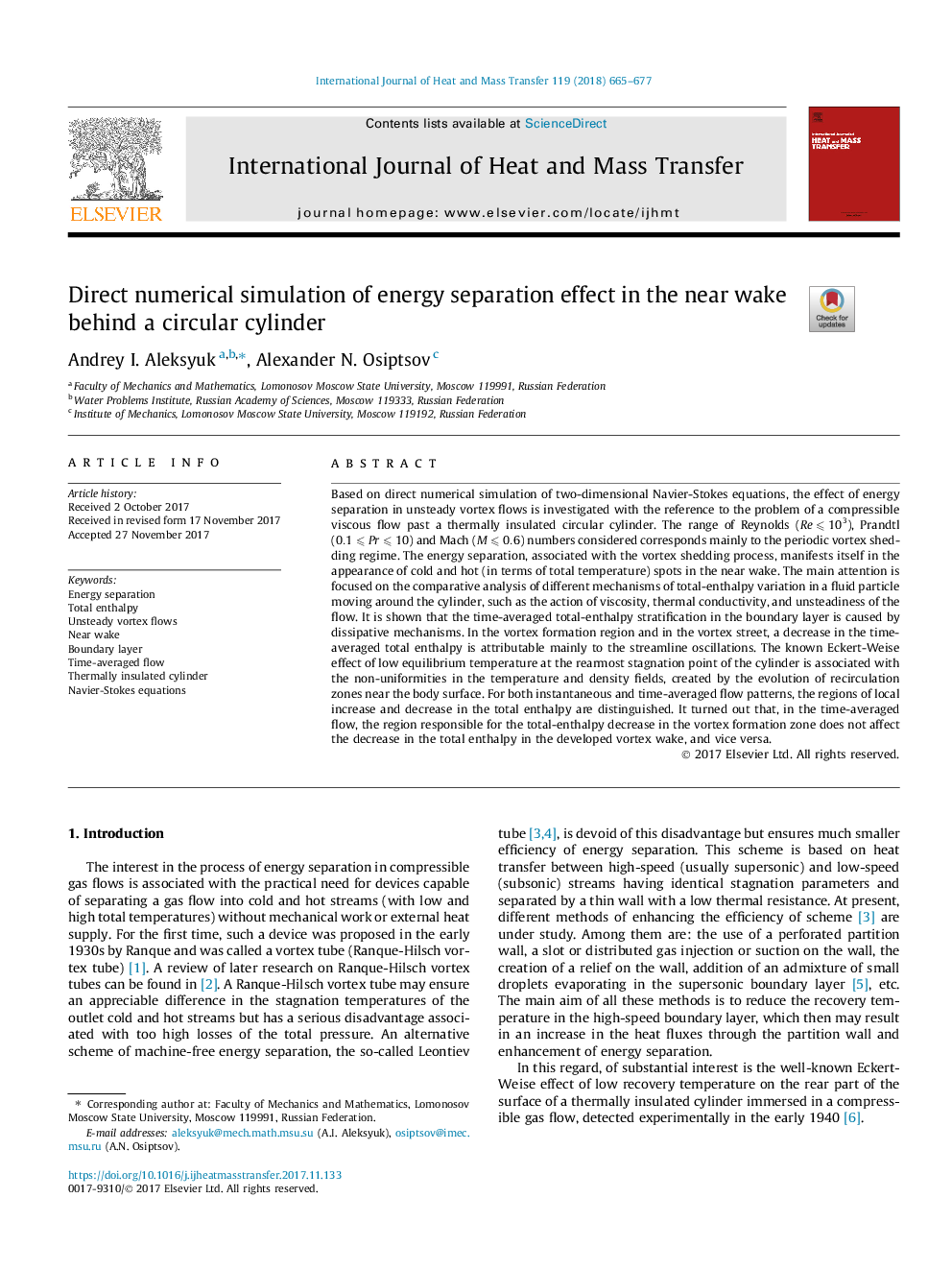| کد مقاله | کد نشریه | سال انتشار | مقاله انگلیسی | نسخه تمام متن |
|---|---|---|---|---|
| 7054728 | 1458021 | 2018 | 13 صفحه PDF | دانلود رایگان |
عنوان انگلیسی مقاله ISI
Direct numerical simulation of energy separation effect in the near wake behind a circular cylinder
ترجمه فارسی عنوان
شبیه سازی مستقیم عددی از اثر جدایی انرژی در نزدیکی پشت یک سیلندر دایره ای
دانلود مقاله + سفارش ترجمه
دانلود مقاله ISI انگلیسی
رایگان برای ایرانیان
کلمات کلیدی
جداسازی انرژی، آنتالپی مجموع، جریان ناپایدار گرداب، نزدیک بیداری، لایه مرزی، جریان زمان میانگین، سیلندر عایق حرارتی، معادلات ناییر استوکس،
موضوعات مرتبط
مهندسی و علوم پایه
مهندسی شیمی
جریان سیال و فرایندهای انتقال
چکیده انگلیسی
Based on direct numerical simulation of two-dimensional Navier-Stokes equations, the effect of energy separation in unsteady vortex flows is investigated with the reference to the problem of a compressible viscous flow past a thermally insulated circular cylinder. The range of Reynolds (Re⩽103), Prandtl (0.1⩽Pr⩽10) and Mach (M⩽0.6) numbers considered corresponds mainly to the periodic vortex shedding regime. The energy separation, associated with the vortex shedding process, manifests itself in the appearance of cold and hot (in terms of total temperature) spots in the near wake. The main attention is focused on the comparative analysis of different mechanisms of total-enthalpy variation in a fluid particle moving around the cylinder, such as the action of viscosity, thermal conductivity, and unsteadiness of the flow. It is shown that the time-averaged total-enthalpy stratification in the boundary layer is caused by dissipative mechanisms. In the vortex formation region and in the vortex street, a decrease in the time-averaged total enthalpy is attributable mainly to the streamline oscillations. The known Eckert-Weise effect of low equilibrium temperature at the rearmost stagnation point of the cylinder is associated with the non-uniformities in the temperature and density fields, created by the evolution of recirculation zones near the body surface. For both instantaneous and time-averaged flow patterns, the regions of local increase and decrease in the total enthalpy are distinguished. It turned out that, in the time-averaged flow, the region responsible for the total-enthalpy decrease in the vortex formation zone does not affect the decrease in the total enthalpy in the developed vortex wake, and vice versa.
ناشر
Database: Elsevier - ScienceDirect (ساینس دایرکت)
Journal: International Journal of Heat and Mass Transfer - Volume 119, April 2018, Pages 665-677
Journal: International Journal of Heat and Mass Transfer - Volume 119, April 2018, Pages 665-677
نویسندگان
Andrey I. Aleksyuk, Alexander N. Osiptsov,
